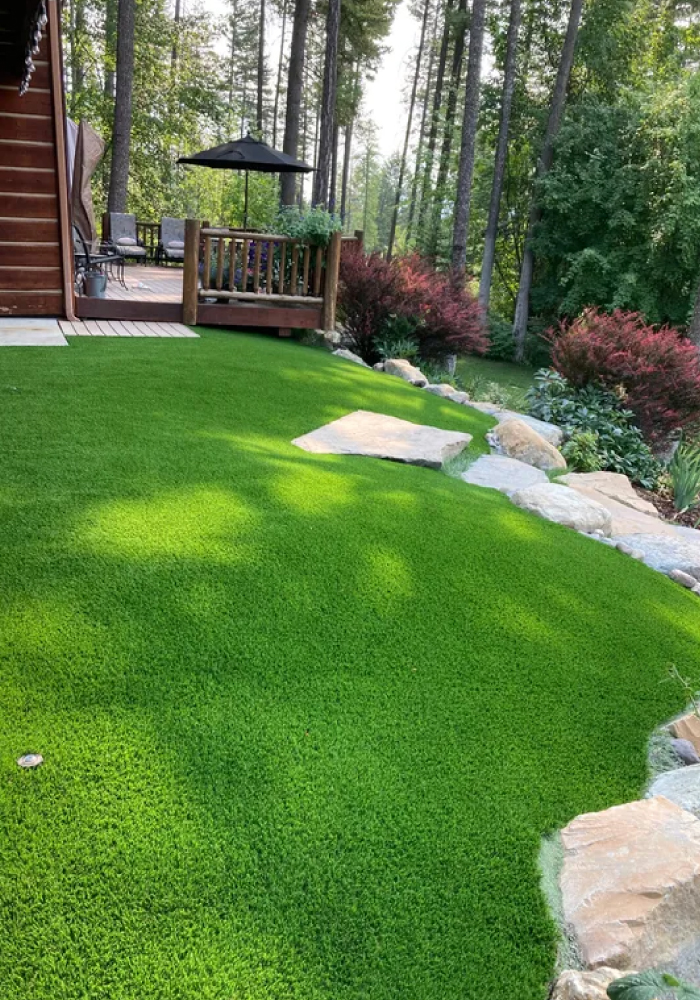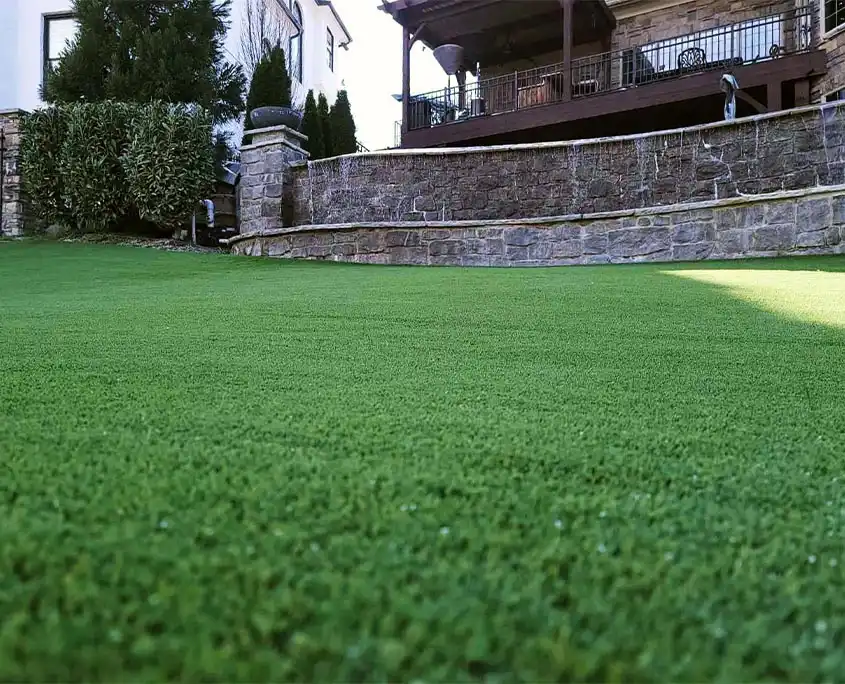Budget-Friendly Turf Installation Phoenix AZ for a Low-Maintenance Lawn Solution
Explore the Environmental Conveniences of Opting for Artificial Lawn Solutions
The fostering of man-made lawn solutions provides a compelling opportunity to deal with pushing ecological obstacles. By substantially decreasing water usage and minimizing the application of dangerous chemicals, these alternatives not just promote lasting landscaping however also shield regional communities. The reduced carbon footprint associated with reduced upkeep tasks contributes to a more lasting strategy to land administration. Nonetheless, the implications of these advantages expand beyond mere preservation initiatives, questioning regarding their long-term effect on habitat preservation and total eco-friendly equilibrium. Checking out these measurements reveals a complex interplay worth thinking about.
Water Conservation Advantages
One of the most substantial advantages of synthetic grass is its capacity to preserve water. In comparison, man-made grass does not need watering, considerably lowering the general demand for water sources.
By removing the need for normal watering, synthetic grass adds to lasting landscape techniques and helps alleviate the environmental effect of excessive water consumption. The preservation of water extends to the decrease of overflow, which can lead to dirt erosion and waterway pollution.
Additionally, the setup of man-made turf allows home owners and districts to assign water sources more efficiently, concentrating on essential usages such as drinking water and agriculture. The shift in the direction of man-made lawn not only advertises responsible water use yet also straightens with more comprehensive environmental objectives intended at protecting natural deposits.
As areas significantly focus on sustainability, the water preservation advantages of synthetic grass provide a compelling instance for its adoption in commercial and household landscape design tasks.
Minimized Chemical Usage
The shift to synthetic grass substantially lowers the dependence on chemical therapies generally utilized in all-natural lawn maintenance. Traditional turf monitoring normally entails the application of chemicals, herbicides, and fertilizers to promote growth and control insects. These chemicals can posture dangers to human health, local wildlife, and the environment, adding to dirt and water contamination.
On the other hand, synthetic grass gets rid of the need for these unsafe materials. When installed, it needs marginal maintenance, mostly consisting of normal cleansing and occasional infill replenishment. This reduction in chemical usage not only profits the instant setting but also adds to more comprehensive eco-friendly security. By decreasing the launch of artificial substances into the ecological community, synthetic turf advertises healthier dirt and water systems.
In addition, the lack of chemical drainage associated with man-made grass installments helps protect neighborhood rivers from contamination, sustaining water life and maintaining biodiversity. Phoenix turf companies. As communities progressively prioritize sustainable techniques, selecting fabricated lawn offers a sensible remedy that aligns with ecological conservation objectives. Via this change, homeowner can delight in rich eco-friendly spaces without endangering ecological wellness, leading the way for a much more sustainable future
Lower Carbon Impact

Moreover, the installment of fabricated lawn can Click Here result in significant water conservation. All-natural yards require considerable amounts of water for watering, which not only contributes to the carbon footprint connected with water removal and therapy but additionally strains local water resources. In contrast, synthetic grass needs marginal upkeep, calling for no watering, consequently substantially reducing water usage and its associated power prices.
In addition, the long life of fabricated grass adds to its decreased carbon impact. With a life expectancy of up to 15 years or more, the demand for regular replacements is reduced, resulting in much less waste and reduced power usage in manufacturing and dealing with typical grass options. In general, artificial lawn provides a lasting alternative for eco mindful landscape design.
Habitat Conservation
Environment conservation is a critical consideration in the argument over landscape design selections, particularly when comparing synthetic grass to all-natural lawn. Natural turf yards typically require comprehensive upkeep, consisting of using herbicides, chemicals, and plant foods, which can detrimentally influence local communities. These chemicals can leach right into the soil and waterways, damaging native plants and fauna and interfering with regional habitats.
In comparison, man-made grass provides a chance to decrease the environmental footprint of landscaping. By going with synthetic lawn, house owners can lessen the disruption of natural environments related to standard yard treatment practices. Synthetic grass eliminates the requirement for damaging chemicals, thereby protecting nearby wildlife and preserving the honesty of bordering environments. The installment of synthetic lawn additional hints can lead to the conversion of former yard locations into more biodiverse landscapes, such as pollinator gardens or indigenous plant areas, which can support neighborhood wildlife.
Ultimately, the change to synthetic grass not only conserves water and lowers maintenance efforts yet also promotes an extra unified connection in between human tasks and the native environment, promoting environment preservation at the same time.
Long-Term Sustainability
Lasting sustainability is a vital consider assessing the benefits of synthetic grass over conventional turf lawns. One of the most considerable advantages of artificial turf is its resilience; it can last up to 15-20 years with minimal maintenance, whereas natural turf calls for frequent reseeding and substitute. This long life decreases the need for constant resources, such as water, plant foods, and pesticides, which are crucial for maintaining a healthy grass lawn.
Additionally, synthetic grass adds to a reduction in carbon emissions linked with grass care tools. Typical grass frequently call for gas-powered mowers, trimmers, and blowers, every one of which add to air pollution. Artificial turf companies phoenix. In comparison, fabricated turf gets rid of the need for such tools, promoting a cleaner environment
In addition, the production of synthetic grass increasingly uses recycled products, improving its sustainability profile. As suppliers embrace environment-friendly practices, the environmental impact of synthetic grass proceeds to decrease.

Final Thought
The fostering of synthetic grass solutions provides considerable ecological benefits, consisting of substantial water conservation, decreased reliance on dangerous chemicals, and a lower carbon footprint. In addition, man-made lawn help in preserving natural habitats by lessening land disturbance and advertising lasting sustainability with using durable materials. Jointly, these variables highlight the capacity of synthetic grass to contribute favorably to ecological health and wellness and More Info provide a sensible option to conventional landscaping methods in a progressively resource-conscious world.
In comparison, man-made lawn does not require watering, substantially reducing the total need for water sources. By decreasing the release of synthetic substances into the ecological community, artificial lawn advertises much healthier soil and water systems.
Moreover, the installment of fabricated grass can result in considerable water conservation. In comparison, man-made lawn needs marginal maintenance, calling for no watering, therefore dramatically lowering water use and its associated energy expenses.
